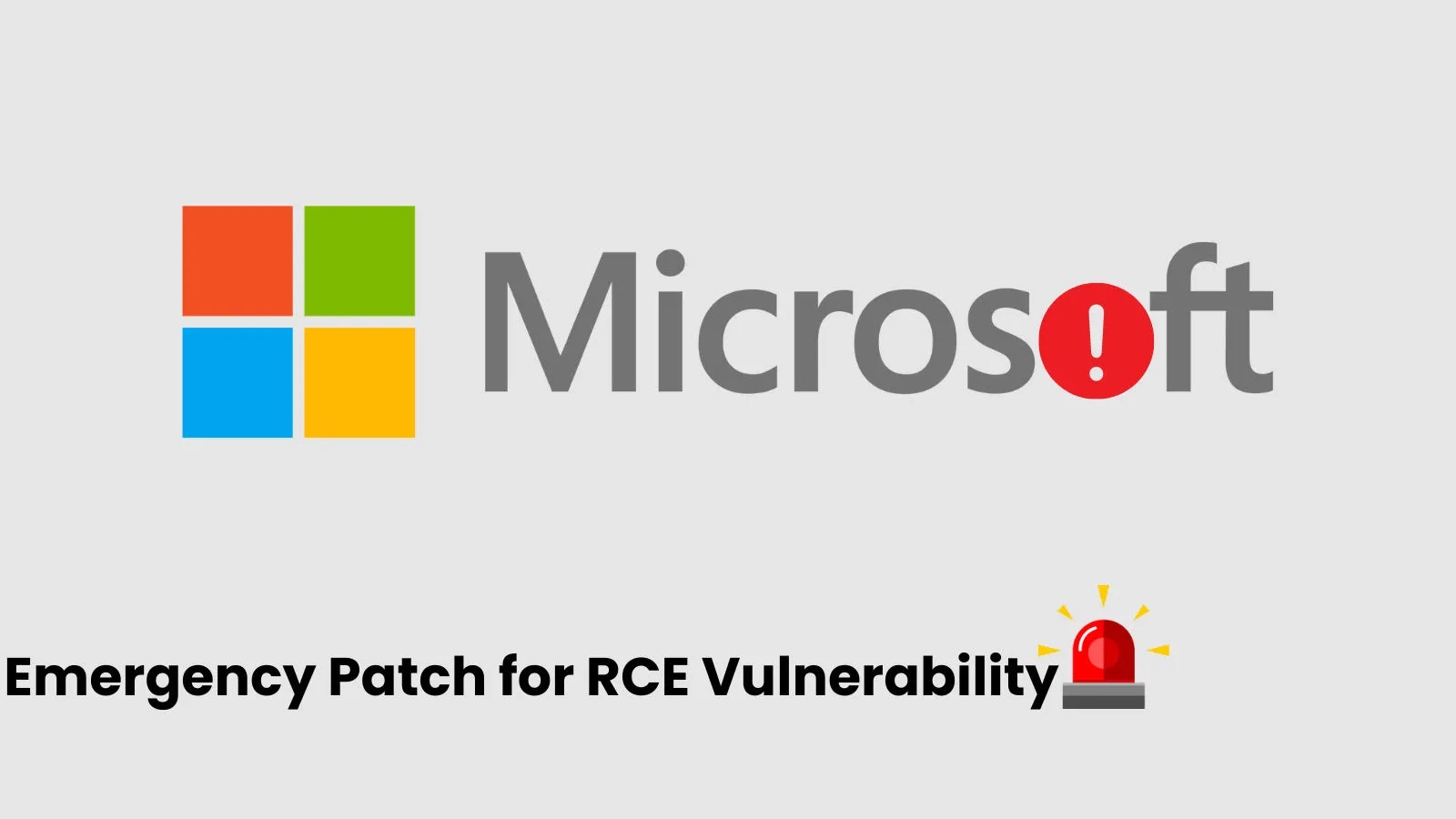Microsoft has issued an urgent out-of-band security update to address a critical remote code execution (RCE) vulnerability in Windows Server Update Services (WSUS). This flaw, identified as CVE-2025-59287, arises from the unsafe deserialization of untrusted data within a legacy serialization mechanism, potentially allowing unauthorized attackers to execute arbitrary code over the network.
The vulnerability was initially disclosed on October 14, 2025, and Microsoft released the emergency patch on October 23, 2025, to mitigate the risk. With a CVSS 3.1 base score of 9.8, this flaw is considered critical due to its high exploitability, requiring no user privileges or interaction. Attackers could exploit this vulnerability by sending specially crafted events to trigger unsafe deserialization, leading to full system compromise and severe impacts on confidentiality, integrity, and availability.
Vulnerability Details and Impact
WSUS is a server role in Windows Server that enables IT administrators to manage the distribution of updates released by Microsoft. While WSUS is not enabled by default, organizations that utilize this service for centralized patch management are at immediate risk if the vulnerability remains unpatched.
The flaw stems from the deserialization of untrusted data in a legacy serialization mechanism within WSUS. This vulnerability allows attackers to execute arbitrary code over the network without requiring authentication or user interaction. The potential consequences include unauthorized access to sensitive data, disruption of critical services, and complete system compromise.
Proof-of-Concept Exploit and Exploitation Likelihood
Security researchers from MEOW and CODE WHITE GmbH, including Markus Wulftange, responsibly reported the deserialization weakness associated with CWE-502. Following the disclosure, proof-of-concept (PoC) exploit code was made publicly available, increasing the likelihood of exploitation. Microsoft updated the CVE’s temporal score to 8.8, indicating that exploitation is more likely. Although no active exploitation in the wild has been reported as of now, the availability of PoC code underscores the urgency for administrators to apply the patch promptly.
Affected Systems and Patch Information
The following Windows Server versions are affected by this vulnerability:
– Windows Server 2012
– Windows Server 2012 R2
– Windows Server 2016
– Windows Server 2019
– Windows Server 2022
– Windows Server 2022, 23H2 Edition
– Windows Server 2025
Microsoft has released specific Knowledge Base (KB) numbers corresponding to each affected version:
– Windows Server 2012: KB5070887
– Windows Server 2012 R2: KB5070886
– Windows Server 2016: KB5070882
– Windows Server 2019: KB5070883
– Windows Server 2022: KB5070884
– Windows Server 2022, 23H2 Edition: KB5070879
– Windows Server 2025: KB5070881
The security update is available through Windows Update, Microsoft Update, and the Microsoft Update Catalog for standalone downloads. It will also sync automatically with WSUS environments. Administrators should be aware that installing the update requires a server reboot, which could disrupt operations in production settings.
Mitigation Measures and Recommendations
For organizations unable to apply the patch immediately, Microsoft recommends the following temporary workarounds:
1. Disable the WSUS Server Role: This action will halt client updates but will neutralize the service, preventing potential exploitation.
2. Block Inbound Traffic to Ports 8530 and 8531: Implementing this measure at the host firewall level will prevent external access to the WSUS service.
These workarounds should only be considered temporary solutions. Applying the official patch remains the most effective method to secure systems against this vulnerability.
Broader Implications and Industry Response
This incident highlights the ongoing challenges associated with legacy components like WSUS, which many enterprises rely on for centralized patch management. The rapid release of an emergency patch underscores the severity of the vulnerability and the importance of timely updates.
The U.S. Cybersecurity and Infrastructure Security Agency (CISA) has added CVE-2025-59287 to its Known Exploited Vulnerabilities (KEV) Catalog, mandating federal agencies to apply the patch by November 14, 2025. This action emphasizes the critical nature of the flaw and the necessity for immediate remediation.
Security firms have reported real-world attacks exploiting this vulnerability as early as October 24, 2025. Dutch cybersecurity company Eye Security detected exploitation attempts involving a Base64-encoded .NET payload designed to evade logging by executing commands via a custom request header.
Conclusion
The discovery and subsequent patching of CVE-2025-59287 serve as a stark reminder of the importance of proactive vulnerability management. Organizations utilizing WSUS should prioritize applying the emergency patch to mitigate the risk of remote code execution attacks. Additionally, reviewing and hardening WSUS configurations can further enhance security posture. As cybersecurity threats continue to evolve, maintaining up-to-date systems and promptly addressing vulnerabilities are essential practices for safeguarding enterprise environments.



